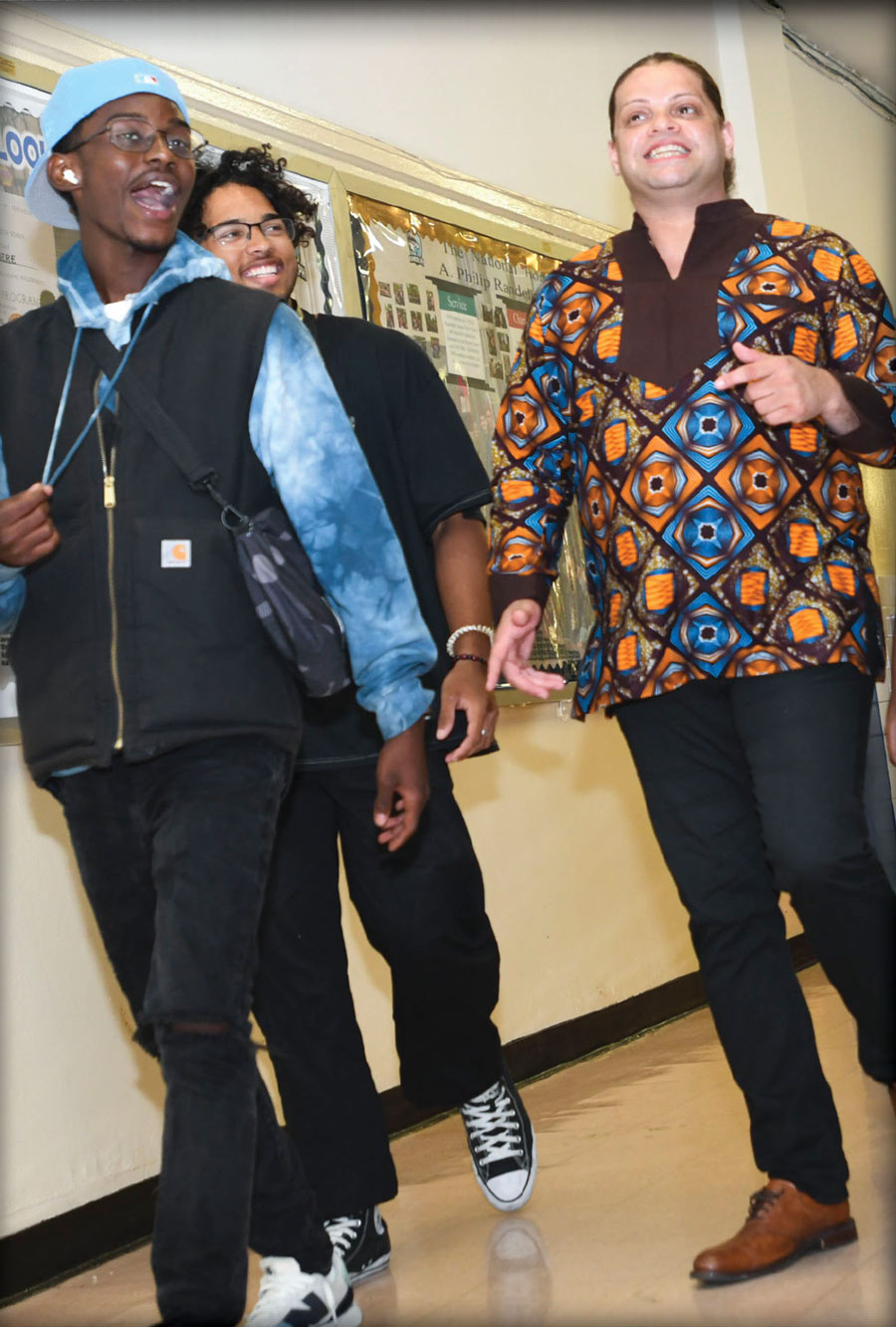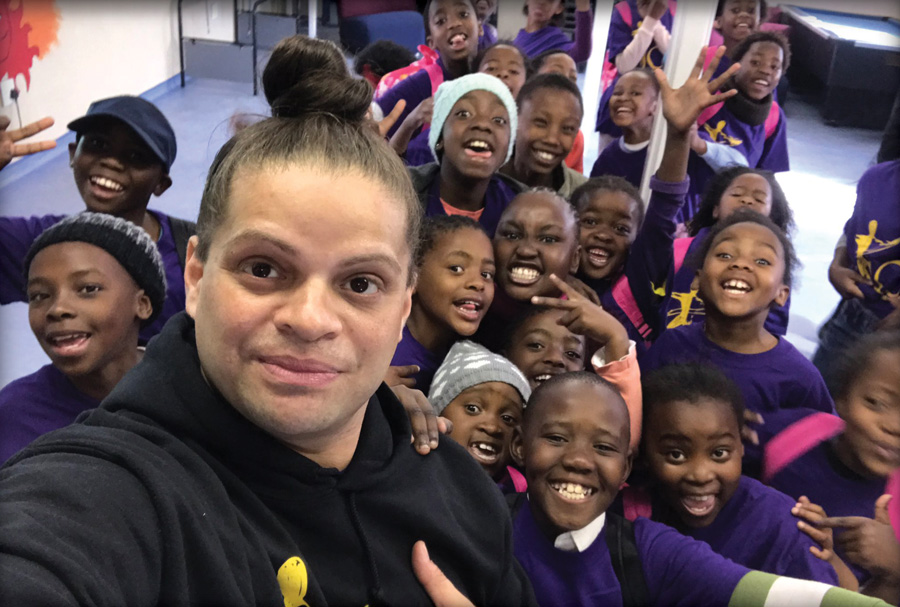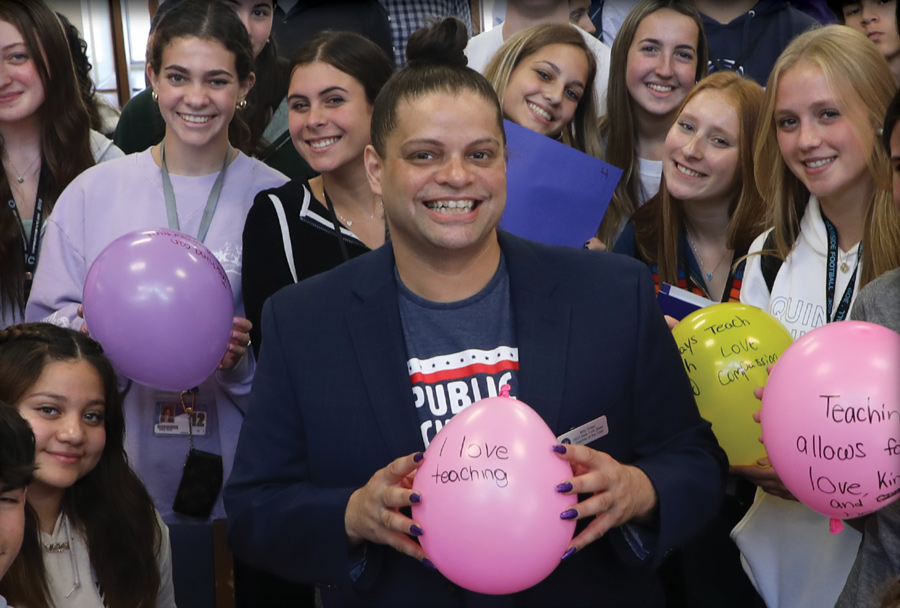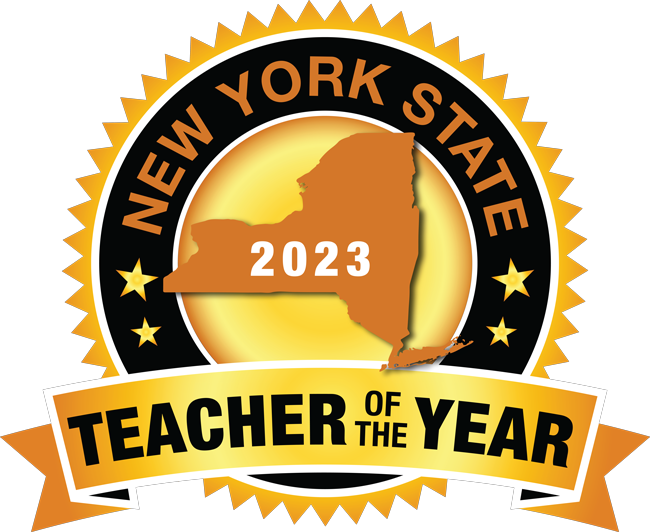

New York’s Teacher of the Year, but Harlem’s own
tanding on the southern end of Randall’s Island, Billy Green looks across the water at two worlds.
To the south, the supertall buildings along Central Park peak above the rest of Manhattan’s skyline, the sawtooth representation of the romanticized big dreams and bright lights tourists wax on about.
To the west, aging brick public housing buildings stretch for blocks above jammed FDR traffic, the Manhattan slowly being eaten by gentrification but clinging to deep-rooted neighborhood character and characters you’ll only find in New York.
Suggest that the world to the south is the dreamy portrait of his city and Green, as he so often does, will keep it real: True beauty is west. Harlem. His home. His world.
It’s the source of his sazón. It’s where, as a kid, he attended UCLA (the “University of the Corner of Lexington Avenue”). And it’s where, after 20 years of teaching in a handful of schools elsewhere in the city, he’s returned for the next chapter of his career at A. Philip Randolph Campus High School, committing himself to validating kids who are growing up where he did, like he did.
A dash of each thing is the recipe that led to the state Board of Regents naming Green the 2023 New York State Teacher of the Year. And that recipe is distinctly of and for his barrio.
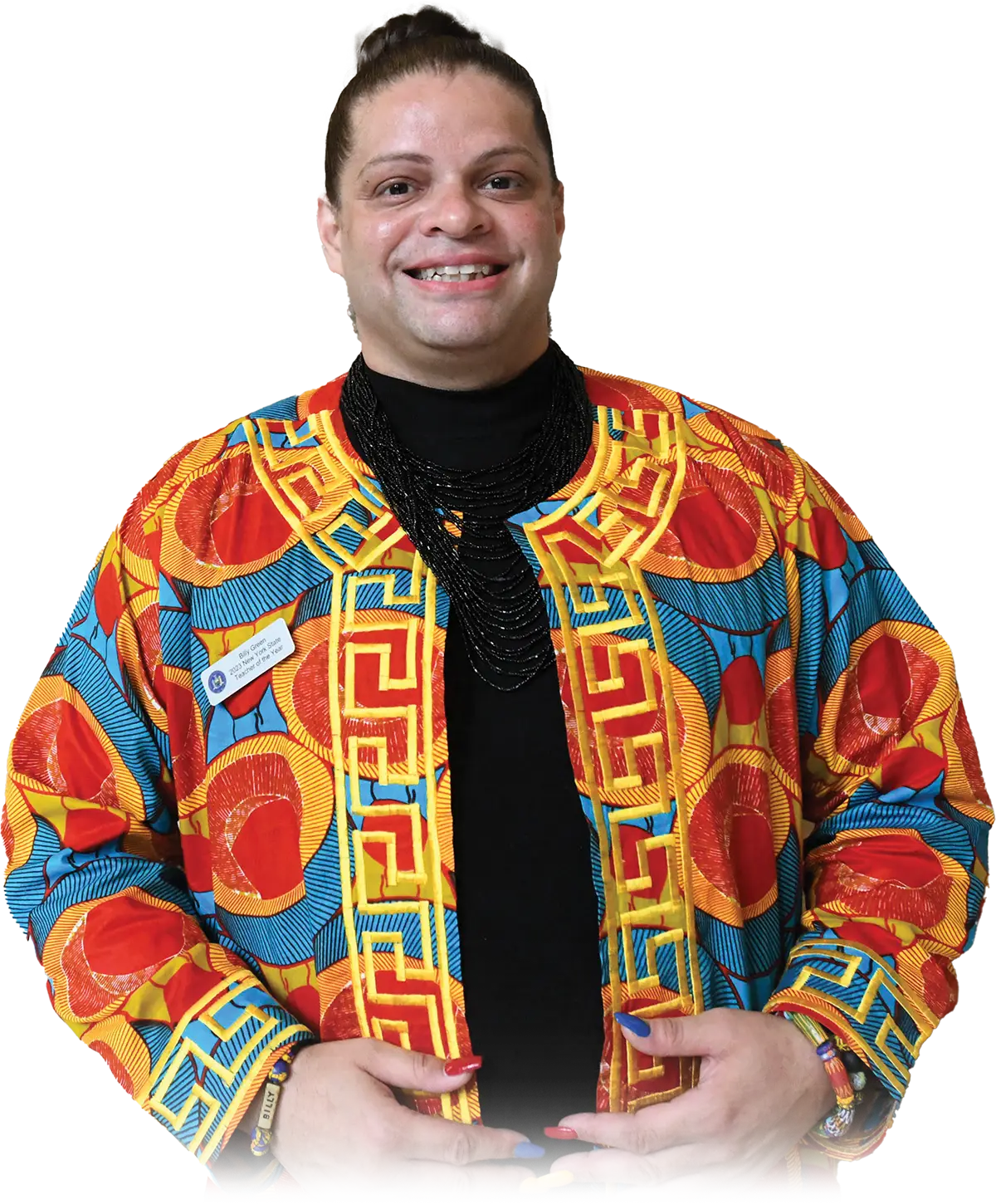
Part teacher, part chemist, part West African dancer, part chef, part rebel, Green is not easily defined. But community is a clear thread in his life, from the pride he feels for Harlem, down to the way he’s demanded — emphasis on demanded — his classroom be set up. There are no rows of individual desks. In fact, he’s scored himself custom-made desks with whiteboards in the center around which students cluster to draw molecular structures or solve problems together before rotating around the room to check each other’s work and debate the theories that led to their conclusions.
Green is not a lecturer. To be sure, he isn’t afraid to passionately give chapter and verse on any topic. But he’s equally as passionate about learning with his students, rather than his students only learning from him.
Tapping into “youth culture” is a constant refrain from Green. It’s not about acting hip. It’s about allowing students to use their experiences and interests to demonstrate mastery of the subject at hand.
Green often recalls one student who was teetering on the edge of failing his class. When the student missed the midterm, Green recognized his interest as a musician and challenged him to write a rap about the topics covered on the exam.
“Through song he was able to deliver content. He is now engaged in the classroom and does not want to drop out. School should always be about putting students FIRST!”
More than alternative assessments or teaching methods, Green puts an emphasis on making his classroom a communal safe space. For the 2022–23 school year, he got himself moved into a larger room, complete with a kitchen area so he can cook food for students who need or want it, with a focus on meals familiar to an ethnically diverse student body (plátanos, jollof rice, Sunday gravy with meatballs — he knows all the recipes). Students can hang out in his room. And when there’s a teachable moment about even tough social issues, he’s quick to call it out.
Added Gifty Asamani, Ph.D., Green’s co-teacher during his previous stint in the South Bronx: “He’s about making sure that especially Black and brown kids are learning, that they are respected, regardless of their socioeconomic background. He’s lived that life, so he understands.”
That life he’s lived has not been easy. Green was homeless from a young age. He was bullied for being gay. He developed a tough attitude, and by junior high was the kid interrupting class, cursing out the teacher and, at least on the outside, showing little regard for his own education.
But he found his communities. One, against the odds, was teaching.
While attending the prestigious Manhattan East School for Arts & Academics, he began teaching his younger siblings and cousins, bringing his class materials and musical instruments from school to use in his lessons.
“My first day as a teacher was in an abandoned building on 119th Street between Lexington and Park Avenue,” Green recalled of the “school” he started as a 12-year-old.
Around that time, he also met Jane Kehoe-Higgins, the teacher he has credited with saving him from the streets. Simply put, she didn’t take his guff, and when he walked into her ninth-grade English class after having sparred with her in summer school the months before, he made the most of their second-chance meeting. Higgins became not only a mentor, but a force to get him through high school and literally into Williams College (she drove him to Massachusetts for a six-week summer science program the day after graduation).
Green also found community through the arts. It was at a Manhattan East talent show that Opus Dance Theatre Inc. Executive Director James Grant first saw Green, “this outrageous, talented young man” on stage.
Joining Opus’s youth troupe was how Green channeled his kinetic energy. He also credits the group with helping him turn his young life around. “I had West African dance, which was different,” he said, “because I was very connected as a Puerto Rican-Black person to my culture.”
Green has stuck with Opus since those Manhattan East days; he and Grant have developed arts camps in Africa that emphasize preservation and advocacy of indigenous cultures.
Across all these communities, Green has found mentors. Whether he’s refering to Higgins, Grant or others, Green emphasizes the skills he’s learned from each. But more than skills, he’s learned the value of mentorship itself and has become relentless in paying it forward through teaching.
“I chose teaching because I am a social billionaire through every single act of love that my kids put out there.”
